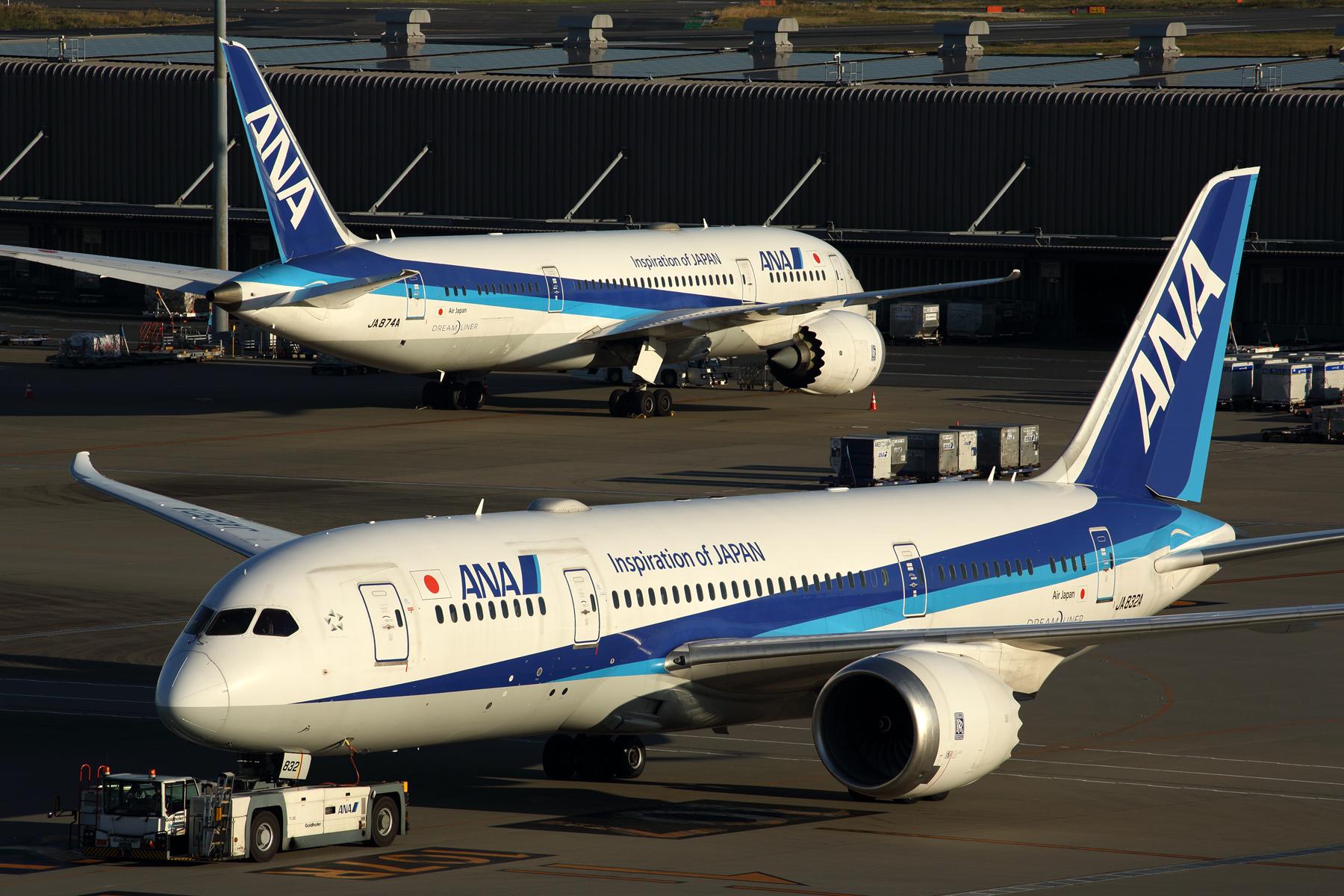
All Nippon Airways (ANA) plans to create a new low-cost widebody unit and cut back its mainline fleet as part of a major overhaul of its strategy spurred by the COVID-19 crisis.
The new carrier is expected to be launched during the fiscal year beginning April 1, 2022. It will use Boeing 787s to fly routes to Southeast Asia and Oceania. ANA intends to use its existing Air Japan entity–primarily a charter operation–as the basis for the new carrier. ANA told Aviation Daily the name is still to be decided.
ANA said the subsidiary will target demand for “low-cost, medium-distance flights.” The carrier is expected to achieve lower unit costs by operating 787s with more than 300 seats in a two-class configuration. A diagram released by ANA shows the new carrier’s model positioned between the ANA mainline unit and the group’s existing narrowbody LCC Peach.
Rival Japan Airlines launched its Zipair Tokyo widebody LCC in 2020, operating two 787-8s. Peach is also sticking with its plan to launch medium-haul LCC services with the addition of Airbus A321LRs.
ANA confirmed that it will be retiring many more aircraft in 2020 than it had previously planned. The carrier intends to retire 35 aircraft, including 22 Boeing 777s. This is a dramatic increase from its pre-COVID-19 plan of seven retirements. The airline has also deferred a few deliveries due in 2020.
There will still be 13 new additions in fiscal 2020, so the ANA fleet will decrease by 22 aircraft to 243 by the end of the fiscal year. The original plan was for a net increase of nine. Peach will keep its fleet flat at 33 aircraft for fiscal 2020, versus planned growth of two aircraft.
Overall, ANA’s cost-reduction efforts are expected to yield savings of ¥150 billion ($1.4 billion) in fiscal 2020, and ¥250 billion in fiscal 2021. Its other measures include downsizing and consolidating office space, increasing cooperation on maintenance within the group, and centralizing procurement procedures. The U.S.-based Pan Am International Flight Academy will be dissolved.
Labor costs will be reduced by shifting outsourced business in-house, and temporarily relocating employees within and outside the company. About 100 employees will be sent to other companies with workforce shortages, with the number rising to 400 by spring 2021. ANA said it will also put a proposal to unions to reduce wages and bonuses and to expand unpaid leave programs.
Another main plank of the revised business plan is the creation of a data-driven digital platform, encompassing all aspects of the group’s business to “create value beyond the airline operations.”
The airline said its latest moves are intended “to address how travel has changed [and] to build resilience toward any future global risks.” ANA predicts demand from business travel will not fully return to pre-pandemic levels, although leisure and visiting friends and relatives (VFR)traffic will remain robust. There will be new demand for greater hygiene during travel, contactless and automated options, simplified services and more customization options. The focus of its airline brands will reflect these assumptions.
Separately, ANA Holdings reported a net loss of ¥188.4 billion for the six months through Sept. 30, its fiscal first half. This compares to a profit of ¥56.7 billion for the same period a year earlier.
The group’s performance improved significantly in the second fiscal quarter compared to the first quarter, CFO Ichiro Fukuzawa said. This “proves that we’ve already bottomed out and are seeing dramatic recovery,” Fukuzawa said.
ANA’s fiscal first-half operating loss was ¥280.9 billion, versus a profit of ¥78.8 billion a year earlier. Revenue declined by 72.4% to ¥291.8 billion.
For the full-service parent airline, international passenger revenue was down 94.2% for the half-year. Domestic revenue declined 78.6% as demand began to recover from May. The cargo segment had a better performance with revenue down 0.6% for international and 31.6% for domestic. The Peach LCC unit saw its revenue decline by 81.7%.
ANA predicts its group operating revenue will be down by 62.5% for the full fiscal year through March 31, 2021. The carrier forecasts a group net loss of ¥510 billion for the full fiscal year, versus a profit of ¥27.6 billion a year earlier. The net loss includes ¥73 billion in impairment charges related to the aircraft retirements.





